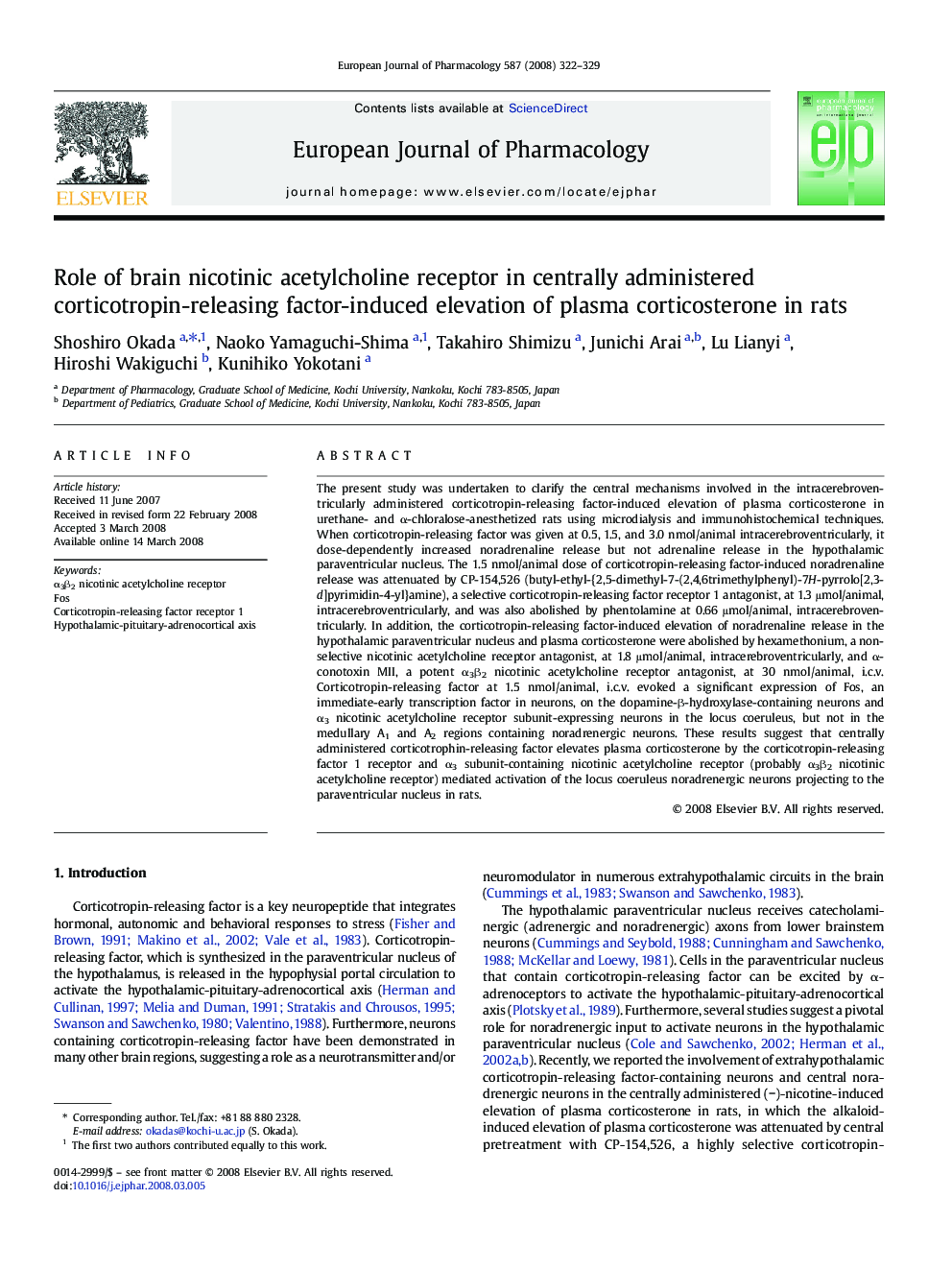| Article ID | Journal | Published Year | Pages | File Type |
|---|---|---|---|---|
| 2535363 | European Journal of Pharmacology | 2008 | 8 Pages |
The present study was undertaken to clarify the central mechanisms involved in the intracerebroventricularly administered corticotropin-releasing factor-induced elevation of plasma corticosterone in urethane- and α-chloralose-anesthetized rats using microdialysis and immunohistochemical techniques. When corticotropin-releasing factor was given at 0.5, 1.5, and 3.0 nmol/animal intracerebroventricularly, it dose-dependently increased noradrenaline release but not adrenaline release in the hypothalamic paraventricular nucleus. The 1.5 nmol/animal dose of corticotropin-releasing factor-induced noradrenaline release was attenuated by CP-154,526 (butyl-ethyl-{2,5-dimethyl-7-(2,4,6trimethylphenyl)-7H-pyrrolo[2,3-d]pyrimidin-4-yl}amine), a selective corticotropin-releasing factor receptor 1 antagonist, at 1.3 μmol/animal, intracerebroventricularly, and was also abolished by phentolamine at 0.66 μmol/animal, intracerebroventricularly. In addition, the corticotropin-releasing factor-induced elevation of noradrenaline release in the hypothalamic paraventricular nucleus and plasma corticosterone were abolished by hexamethonium, a non-selective nicotinic acetylcholine receptor antagonist, at 1.8 μmol/animal, intracerebroventricularly, and α-conotoxin MII, a potent α3β2 nicotinic acetylcholine receptor antagonist, at 30 nmol/animal, i.c.v. Corticotropin-releasing factor at 1.5 nmol/animal, i.c.v. evoked a significant expression of Fos, an immediate-early transcription factor in neurons, on the dopamine-β-hydroxylase-containing neurons and α3 nicotinic acetylcholine receptor subunit-expressing neurons in the locus coeruleus, but not in the medullary A1 and A2 regions containing noradrenergic neurons. These results suggest that centrally administered corticotrophin-releasing factor elevates plasma corticosterone by the corticotropin-releasing factor 1 receptor and α3 subunit-containing nicotinic acetylcholine receptor (probably α3β2 nicotinic acetylcholine receptor) mediated activation of the locus coeruleus noradrenergic neurons projecting to the paraventricular nucleus in rats.
